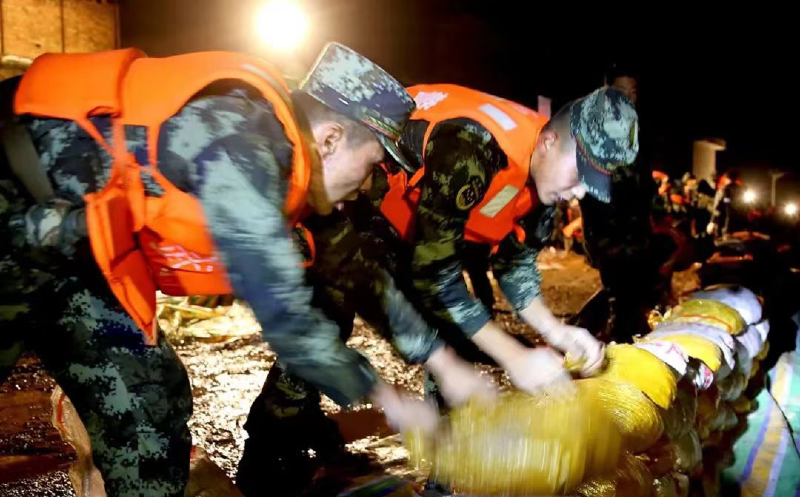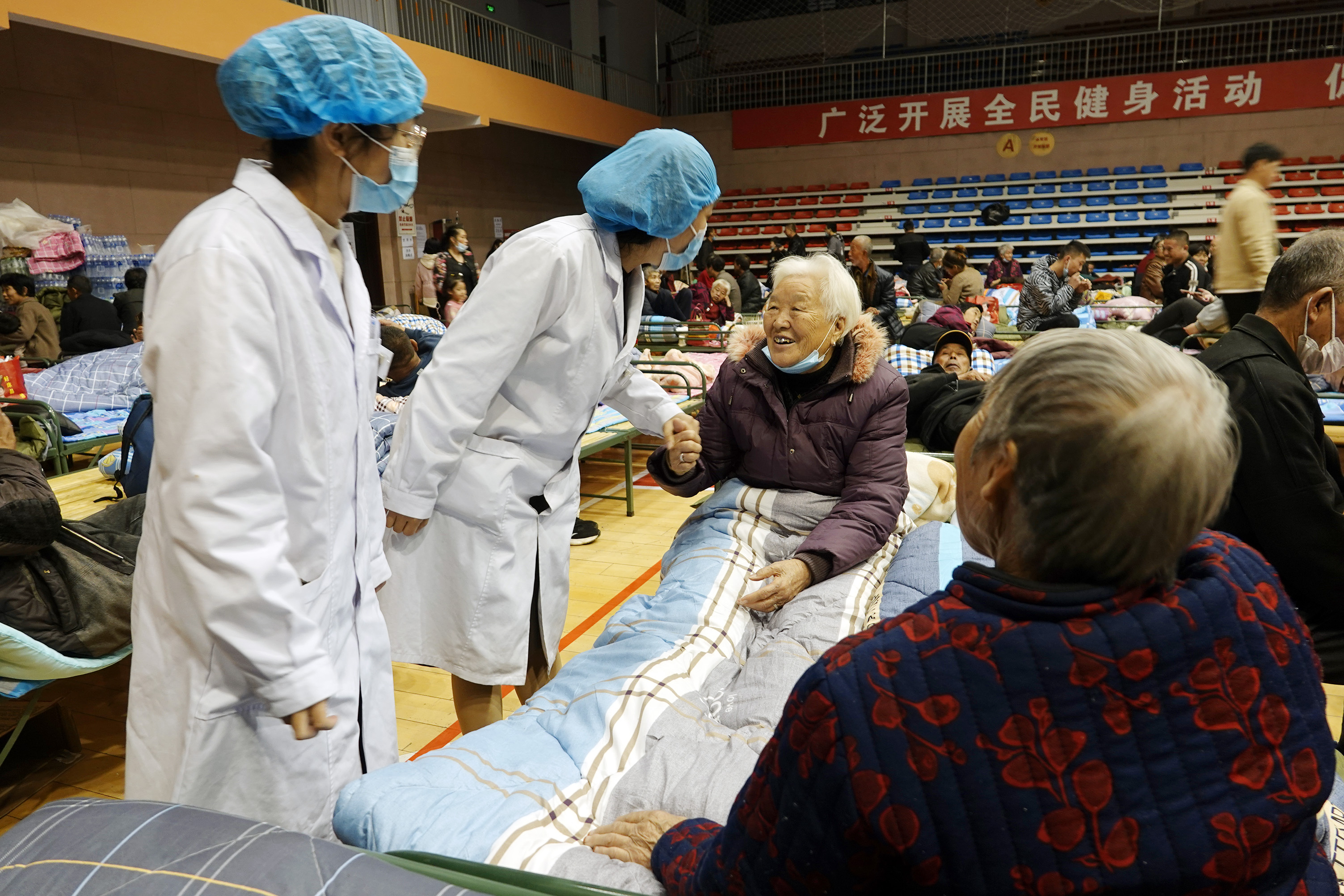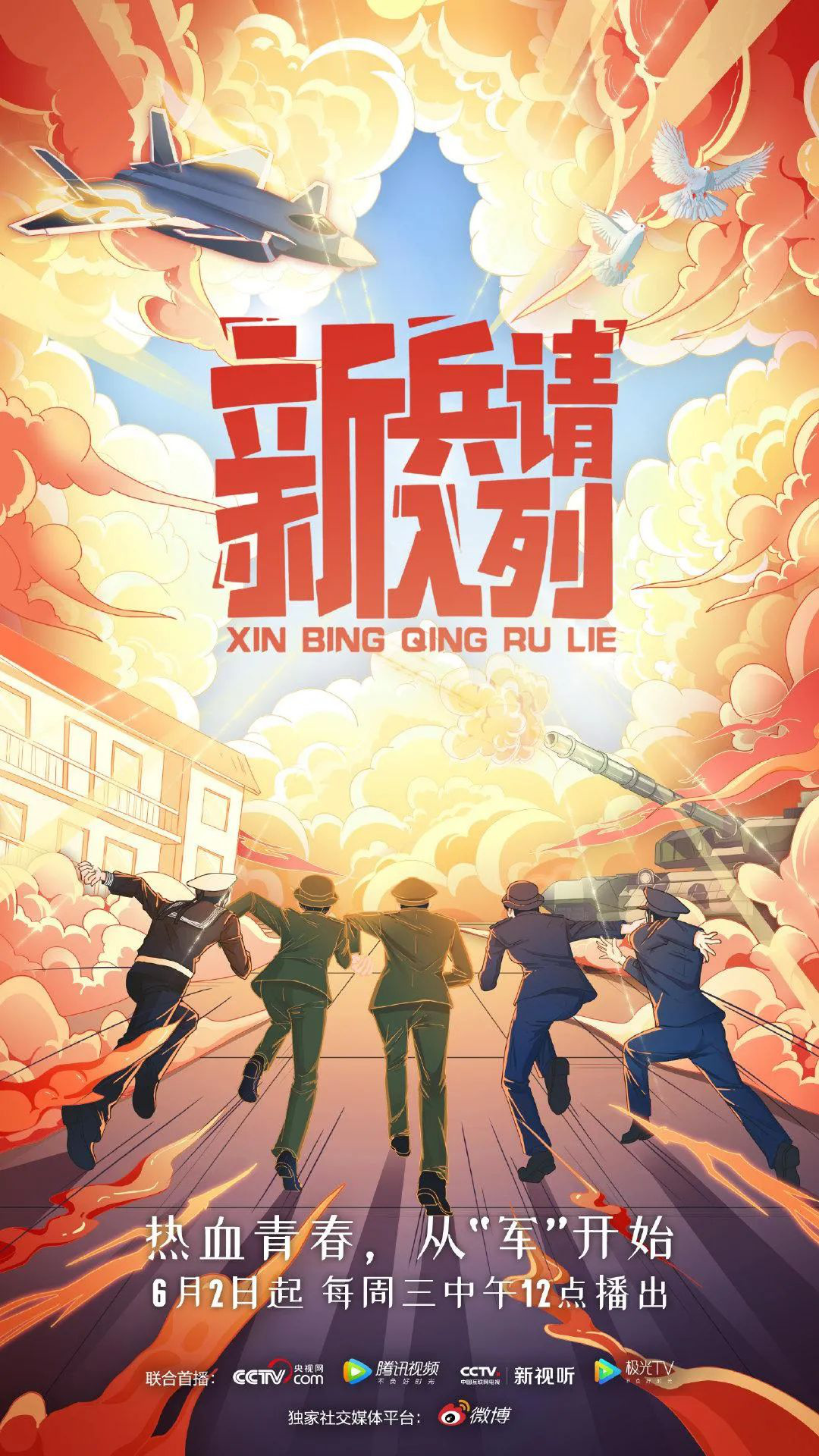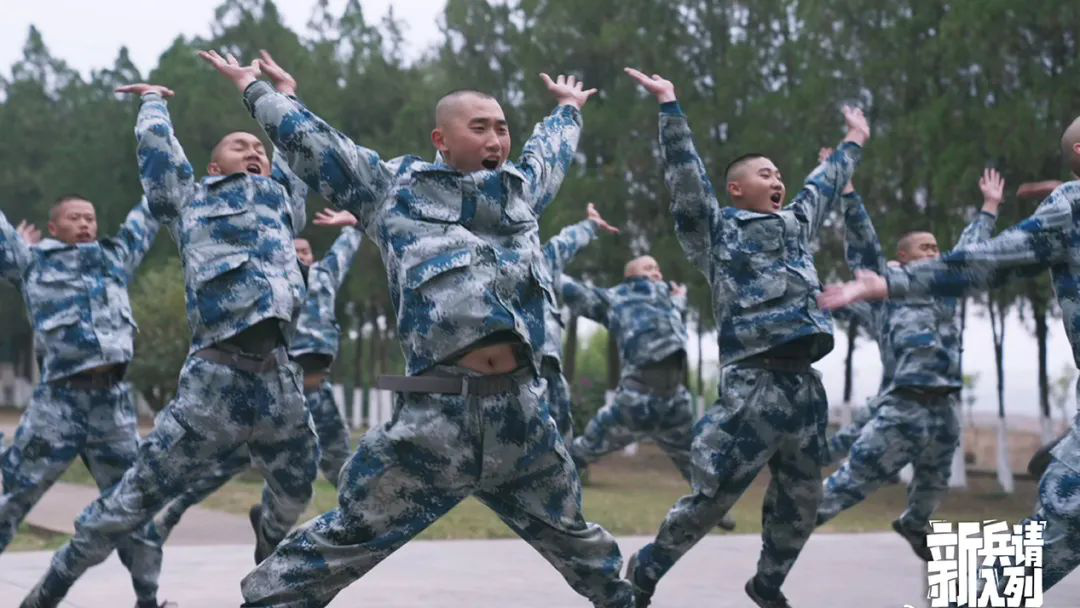Shanxi: United as one, we will survive the difficult times and go all out to restore our beautiful homeland.
During the National Day holiday, a heavy rainfall that lasted for more than 90 hours pushed Shanxi to the forefront.
The lower reaches of Fenhe River suffered the biggest flood peak in the past 40 years, with 37 rivers in Shanxi flooding, embankments such as Wuma River, Fenhe River and Ciyao River burst, 60,213.6 kilometers of roads were damaged, 1,757,100 people in 76 counties were affected, and 120,100 people were resettled urgently. The affected area of crops reached 3,576,900 mu, resulting in a direct economic loss of 5.029 billion yuan.
Danger is constant, and responsibility is like a mountain! People first, life first!
The Shanxi Provincial Party Committee and the provincial government responded quickly, started the disaster relief response at the first time, and allocated and allocated relief materials and funds in a timely manner. Party committees and governments at all levels, the people and the rescue team were moved by the "flood" and United as one, starting a "tough battle" for flood control and disaster relief, and restoring and rebuilding their homes.

The cadres of Xixue Village, Jifeng Town, Jishan County and the rescue team worked together to fight floods. Photo courtesy of Yuncheng Daily
Comprehensive response, life first, launching a "tough battle" for flood control and disaster relief.
Shanxi, which has always been short of water, is now a Zeguo.
"From October 2 to October 7, the average precipitation in the province was 119 mm, and the average rainfall in the Fenhe River Basin was 132.6 mm, both far exceeding the historical level. This is the strongest precipitation process in autumn since Shanxi has meteorological observation records. " Wang Wenyi, deputy director of Shanxi Meteorological Bureau, said.
Flood is an order, and flood control is a responsibility.
The Shanxi Provincial Party Committee and the provincial government attached great importance to it, and quickly convened the province’s flood control and disaster relief and post-disaster recovery and reconstruction work meeting, and made a special deployment meeting to restore production and living order after the disaster, and made arrangements for doing a good job in related work.

The officers and men of the armed police are stepping up the construction of dams. Photo courtesy of Yuncheng Daily
Although disasters are merciless, people can be more promising. Shanxi launched a provincial flood control level IV response and decisively shut down some coal mines, non-coal mines and hazardous enterprises; In view of Taiyuan, Lvliang, Jinzhong, Yuncheng and other places with serious dangers, 165 rescue teams and 13,535 people were mobilized to rescue and rescue; Set up 845 temporary centralized resettlement sites, distribute 4,520 tents and 24,600 cotton trousers, and properly resettle the affected people; The Shanxi Provincial Department of Finance, together with the Provincial Emergency Management Department, the Provincial Department of Agriculture and Rural Affairs, and the Provincial Department of Water Resources, issued 50 million yuan of provincial flood disaster relief funds, 148 million yuan from the Shanxi Charity Federation, and 80.2 million yuan from the social relief donations accepted by the Shanxi Red Cross. The National Disaster Reduction Committee and the Emergency Management Department also launched the national level IV emergency response to disaster relief, and sent disaster relief working groups to assist and guide the resettlement and relief work of the affected people. The Ministry of Finance and the Emergency Management Department urgently pre-allocated 50 million yuan of central natural disaster relief funds to Shanxi, and all the funds have been allocated to the grassroots of cities and counties.
At the same time, more than 3,000 cadres and experts from the agricultural and rural system in Shanxi Province went to the fields for the first time to help the affected farmers solve practical difficulties and problems. Shanxi CDC quickly dispatched more than 50 professionals in emergency, infectious diseases, vectors, drinking water, food safety and disinfection to form 11 expert groups, and went to various cities to supervise and guide post-disaster epidemic prevention and risk assessment in the affected areas.
United as one, we can overcome the difficulties together. Shanxi Province actively responded to the dangerous situation and spared no effort to rescue it. After continuous fighting, the province’s flood control and emergency rescue achieved initial results.
Overcome difficulties and charge the front line, and strive to restore the order of production and life.
From the early morning of October 3 to 17: 00 on October 6, the continuous rainfall in Qixian County of Jinzhong City reached 89 hours, and the rainfall in the whole county was nearly 200 mm. The average and maximum daily precipitation approached the historical peak.
On October 6th, Changyuan River Bridge on Nantong-Pudong Railway was attacked by a flood, the abutment was washed away by the flood, and the rails and sleepers were suspended, just like an "iron cable bridge". Changyuan River is the mother river of Qixian County, with a total length of 75,000 meters in Qixian County. Changyuan Henan Tongpu Railway Bridge spans the east and west sides of Changyuan River, which is a railway trunk line running through south-central Shanxi.
Race against the flood, race against time. After the dangerous situation occurred, China Railway Taiyuan Bureau Group Co., Ltd. and Jinzhong City and County fully organized emergency repairs and mobilized more than 800 construction workers to carry out emergency construction day and night. Blast the overflow bridge and open the 30-meter-long spillway; Interception of Changyuan River for 3 hours to gain time for railway construction; More than 200 transport vehicles, more than 50 loaders, excavators and other machinery have all been put into the rush work … … At 7: 36 on October 14th, the South Tongpu Railway resumed operation in both directions after being repaired day and night.

South Tongpu Railway Repair Site. Photo courtesy of China Railway Taiyuan Bureau Group Co., Ltd.
"Unity is strength, unity is strength, this strength is iron, this strength is steel … …” At 9 o’clock on the evening of October 7, at the bank of Ciyao in Xiangle Township, Pingyao County, bursts of songs pierced the night.
Singing loudly, against the roar of the flood — — Ciyao River burst its banks, and the general attack of blocking is about to start. This song is the call sign for Pingyao Brigade, the fire rescue detachment of Jinzhong City, which has been fighting for more than ten hours continuously! Finally, at 1: 30 am on October 8, the Ciyao River burst and successfully closed! The fire commanders and fighters made great efforts to widen and reinforce the dam, and checked repeatedly to ensure that the hidden dangers were eliminated before leaving the scene.
At this moment, the Ciyao River has returned to calm, leaving only a trail of fighting on the muddy embankment. In this battle, 52 officers and men of Pingyao Fire Fighting worked nonstop for 14 hours, built a dam for 16 meters, laid 182 wooden stakes and iron piles, struck about 4,800 times, and filled 9,600 bags of cement. According to statistics, from October 1st to October 7th, Shanxi Firefighters dispatched 386 flood-fighting rescues, 627 fire-fighting vehicles and 3,801 people, and evacuated and rescued 920 trapped people.
Persistence, rescue and mutual assistance … … Numerous forces of "riding the wind and breaking the waves" emerged in the rainstorm. They put on "raincoats and shirts" and became the guardians of the city and the people.
As of October 11th, 30 blocked sections have been blocked by highways in Shanxi Province, 19 blocked sections have been blocked by ordinary national and provincial trunk highways, and 2,800 blocked sections have been blocked by rural highways. The road transport network in the province has basically recovered smoothly. The 56 coal mines that stopped production have resumed production, which will not have a significant impact on Shanxi’s coal supply.
Look out for each other, support from all directions, and go all out to restore a beautiful home.
The rain is continuous, the river is rising, and the areas where Fenhe River and Qinhe River flow are the most seriously affected. The villages built by the river are facing a severe test.
"I never thought there was such a big water." Li Xiaobin, secretary of the Party branch of Beiqiaotou Village, Daxiaobao Town, xiaoyi city, Shanxi Province, recalled the past few days and was very sad. Beiqiaotou Village is located in the south-central part of Shanxi, at the intersection of Wenyu River, Ciyao River and Fenhe River, and it is one of the villages most seriously affected by this flood. "The village was flooded by water more than one meter deep, and the deepest part was more than two meters. The water in the house flooded onto the kang and debris floated. "
On October 3, Li Xiaobin found that the water level of Wenyu River was rising rapidly, and he felt that something was wrong. He and the cadres of villages and towns have successively found more than 10 loaders and 4 excavators to reinforce and raise the dams on the edge of the village with soil and sand.
The plugging failed. On October 6, after learning that the upstream reservoir was going to flood, more than 2,000 people in Qiaotou Village were all transferred, and Li Xiaobin finally evacuated.
At the same time, Hongshan Village, Jiexiu City, which is separated from Qiaotou Village by a river, is also facing collective transfer. The water level is getting higher and higher, so evacuation needs the help of transportation. Some villagers provide their own excavators, and many excavators transport people at the same time. Along the way, the village loudspeakers repeatedly sounded the village committee’s exhortation: "Do a good job of protection and evacuate quickly" and "Life is the most important" … …

On October 8, at the resettlement site of Xinjiang Gymnasium in Yuncheng City, two medical staff on duty (left) learned about the physical health of the people affected by Hongfeng. Gao xinsheng photo
In the face of great disaster, Shanxi people tried to save themselves. At the same time, familiar "life-saving documents" reappeared. The producer is Qi Yifei, a Shanxi girl who is a junior at Xi ‘an Jiaotong University. On the evening of October 6th, she posted her own online sharing form on social media for everyone to provide rescue and disaster information. In just 48 hours after the document was published, more than 600 pieces of help and rescue information were gathered.
Along with the flood, there are also a large number of rescue teams, volunteers and a steady stream of relief supplies. The assistance from all directions illustrates the spirit of China, which is to help each other and help each other in the same boat.
— — I am still in post-disaster reconstruction. I heard that Shanxi was hit by a devastating flood. Li Baomin, the affected people in Liulitang Village, Shangle Village, Weihui City, Henan Province, did not hesitate to donate more than 10 acres of 60,000 kilograms of cabbage and radish.
— — By plane and high-speed train, An Bin, a young man from Urumqi, traveled more than 2,700 kilometers to Linfen, Shanxi, just to become a flood control volunteer.
A special "concert" was held at the resettlement site of Xinjiang Gymnasium in Yuncheng City, where the logistical support was smooth. Volunteers sang My People,My Country with the masses and cheered each other.
The owner of Yuncheng steamed bread shop made 1000 Chinese buns at 3 am and drove them to flood relief workers. Steaming food should be thrown away even through the flood.
Hu Lei, who is disabled and lives by picking up garbage, donated a car full of materials to Beiqiaotou Village from Ningxia.
… …
Related topics such as "Refueling in Shanxi", "Summary of urgently needed materials in Shanxi" and "Holding an umbrella for Shanxi" have been hotly searched, and netizens have been constantly forwarding them, and the spirit of mutual assistance has been transmitted among networks, which has provided strong support for disaster prevention and relief work.
The flood is too great to stop goodwill and determination. After the rainstorm washed away, it washed out the sparkling beauty of human nature.

After the rainstorm, villagers in Rencun Township, Taigu District, Jinzhong City seized the opportunity to harvest peanuts. Sun Taiyan
"I have the confidence to lead everyone to rebuild Beiqiaotou Village, and please rest assured the villagers. There is a strong motherland behind us. " Li Xiaobin bowed while wiping his tears, and the young and old beside him kept nodding. With the arrival of various professional rescue teams, the accumulated water in the affected villages in Daxiaobao Town, including Beiqiaotou Village, is declining.
At 18: 00 on October 11th, 78 elderly people from the Recreation and Nursing Home in Lingshi County, Jinzhong City, Shanxi Province returned to their warm homes safely. "When the flood receded, we went home and were not afraid."
Some people say, "the children of Sanjin survived the most difficult time." At present, the flood flow of rivers in Shanxi has been continuously reduced, and the river gaps have been blocked one after another. The disaster relief materials from all over the country have been fully put in the resettlement sites, and the disaster situation has been alleviated to some extent. Ensuring the basic livelihood of the affected people is placed at the top of the current relief work. As of October 12, Shanxi has implemented a total of 43,042 temporary relief for people suffering from disasters and distributed relief funds of 25.001 million yuan; Charity associations at all levels in the province have received a total of 214 million yuan of social donations and materials worth 76 million yuan, and urgently needed materials such as 148 million yuan of donations and 62 million yuan of warm clothes and quilts are being allocated to the disaster areas one after another.
For the affected areas, the greater difficulty lies in the subsequent recovery and reconstruction. Intensify river clearing to ensure smooth flood discharge; Strengthen the prevention and response to geological disasters such as landslides and mudslides, and carry out inspections and dangers of warping dams and tailings ponds; Do a good job in the investigation of rural adobe houses, caves and other places, and strengthen the investigation of houses soaked in cities for a long time and shanty towns … … While doing a good job in flood control and disaster relief and helping the affected people, Shanxi has gone all out to rebuild its beautiful home.
May Shanxi be safe, and Shanxi will eventually be safe. We believe that the land of Sanjin, which is outstanding in people and places, will be able to rejuvenate and reproduce good scenery.











